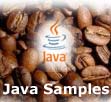Java Samples - Tutorials, articles and code samples |  |
| Posted: 27 Sep 2017 09:00 AM PDT An item in a dictionary is a key/value pair. You can think of a dictionary as an associative array (known in some other languages as an “unordered map,†“hash table,†or “hashâ€). Keys in a dictionary may be of different types, but they must be hashable. Values in a dictionary are arbitrary objects and may be of any type. |
| Posted: 26 Sep 2017 09:00 AM PDT Python for statement repeats execution of a statement, or block of statements, controlled by an iterable expression. The statement or statements that make up the loop body execute once for each item in iterable (unless the loop ends because of an exception or a break or return statement) |
| Posted: 26 Sep 2017 09:00 AM PDT Python while statement repeats execution of a statement or block of statements, until the loop condition is true. Once the loop body finishes executing, Python evaluates the loop condition again from the top to check whether another iteration should execute. This process continues until the loop condition is false, at which point the while statement ends. |
| Posted: 26 Sep 2017 09:00 AM PDT Often, you need to execute some statements only when some condition is true. Or in some cases you would need to execure different blocks of code based on a condition. The compound statement if â€"comprising if, elif, and else clausesâ€"lets you conditionally execute blocks of statements. |
| Posted: 26 Sep 2017 09:00 AM PDT Python with statement is used when you want to execute a block of code based on another operation. For example you need to open a file, for manipulating the file, then close it after you have worked with the file. In this case, python with is used to make sure that the file is closed after processing the file. |
| Posted: 26 Sep 2017 09:00 AM PDT Python String objects (byte strings, as well as text, AKA Unicode, ones) are immutable: attempting to rebind or delete an item or slice of a string will raise an exception. The items of a string object (corresponding to each of the characters in the string) are themselves strings of the same kind, each of length 1. |
| Posted: 26 Sep 2017 09:00 AM PDT A Python list is a mutable ordered sequence of items. The items of a list are arbitrary objects and may be of different types. To denote a list, use a series of expressions (the items of the list) separated by commas (,), within square brackets ([]); if every item is a literal, the whole assembly is a list literal. You may optionally place a redundant comma after the last item. To denote an empty list, use an empty pair of brackets |
| You are subscribed to email updates from Programming Tutorials, articles, and code samples. To stop receiving these emails, you may unsubscribe now. | Email delivery powered by Google |
| Google Inc., 1600 Amphitheatre Parkway, Mountain View, CA 94043, United States | |








No comments:
Post a Comment
Thanks